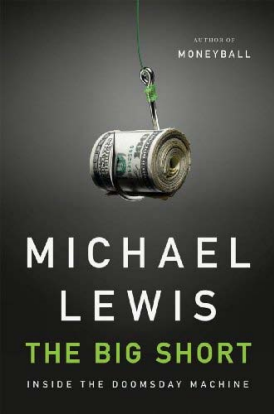
CHAPTER ONE
A Secret Origin Story
Eisman entered finance about the time I exited it. He'd grown up in
New York City, gone to yeshiva schools, graduated from the University of
Pennsylvania magna cum laude, and then with honors from Harvard Law
School. In 1991 he was a thirty-year-old corporate lawyer wondering why he
ever thought he'd enjoy being a lawyer. "I hated it," he says. "I hated being a
lawyer. My parents worked as brokers at Oppenheimer securities. They
managed to finagle me a job. It's not pretty but that's what happened."
Oppenheimer was among the last of the old-fashioned Wall Street
partnerships and survived on the scraps left behind by Goldman Sachs and
Morgan Stanley. It felt less like a corporation than a family business. Lillian
and Elliot Eisman had been giving financial advice to individual investors on
behalf of Oppenheimer since the early 1960s. (Lillian had created their
brokerage business inside of Oppenheimer, and Elliot, who had started out as
a criminal attorney, had joined her after being spooked once too often by
midlevel Mafia clients.) Beloved and respected by colleagues and clients
alike, they could hire whomever they pleased. Before rescuing their son from
his legal career they'd installed his old nanny on the Oppenheimer trading
floor. On his way to reporting to his mother and father, Eisman passed the
woman who had once changed his diapers. Oppenheimer had a nepotism rule,
however; if Lillian and Elliot wanted to hire their son, they had to pay his
salary for the first year, while others determined if he was worth paying at all.
Eisman's parents, old-fashioned value investors at heart, had always told
him that the best way to learn about Wall Street was to work as an equity
analyst. He started in equity analysis, working for the people who shaped
public opinion about public companies. Oppenheimer employed twenty-five
or so analysts, most of whose analysis went ignored by the rest of Wall Street.
"The only way to get paid as an analyst at Oppenheimer was being right and
making enough noise about it that people noticed it," says Alice Schroeder,
who covered insurance companies for Oppenheimer, moved to Morgan
Stanley, and eventually wound up being Warren Buffett's official biographer.
She added, "There was a counterculture element to Oppenheimer. The people
at the big firms were all being paid to be consensus." Eisman turned out to
have a special talent for making noise and breaking with consensus opinion.
He started as a junior equity analyst, a helpmate, not expected to offer his own
opinions. That changed in December 1991, less than a year into the new job.
A subprime mortgage lender called Aames Financial went public, and no one
at Oppenheimer particularly cared to express an opinion about it. One of
Oppenheimer's bankers, who hoped to be hired by Aames, stomped around the
research department looking for anyone who knew anything about the
mortgage business. "I'm a junior analyst and I'm just trying to figure out which
end is up," says Eisman, "but I told him that as a lawyer I'd worked on a deal
for The Money Store." He was promptly appointed the lead analyst for Aames
Financial. "What I didn't tell him was that my job had been to proofread the
documents and that I hadn't understood a word of the fucking things."
Aames Financial, like The Money Store, belonged to a new category of
firms extending loans to cash-strapped Americans, known euphemistically as
"specialty finance." The category did not include Goldman Sachs or J.P.
Morgan but did include many little-known companies involved one way or
another in the early 1990s boom in subprime mortgage lending. Aames was
the first subprime mortgage lender to go public. The second company for
which Eisman was given sole responsibility was called Lomas Financial Corp.
Lomas had just emerged from bankruptcy. "I put a sell rating on the thing
because it was a piece of shit. I didn't know that you weren't supposed to put
sell ratings on companies. I thought there were three boxes--buy, hold,
sell--and you could pick the one you thought you should." He was pressured
to be a bit more upbeat, but upbeat did not come naturally to Steve Eisman.
He could fake upbeat, and sometimes did, but he was happier not bothering. "I
could hear him shouting into his phone from down the hall," says a former
colleague. "Joyfully engaged in bashing the stocks of the companies he
covered. Whatever he's thinking, it comes out of his mouth." Eisman stuck to
his sell rating on Lomas Financial, even after the Lomas Financial Corporation




